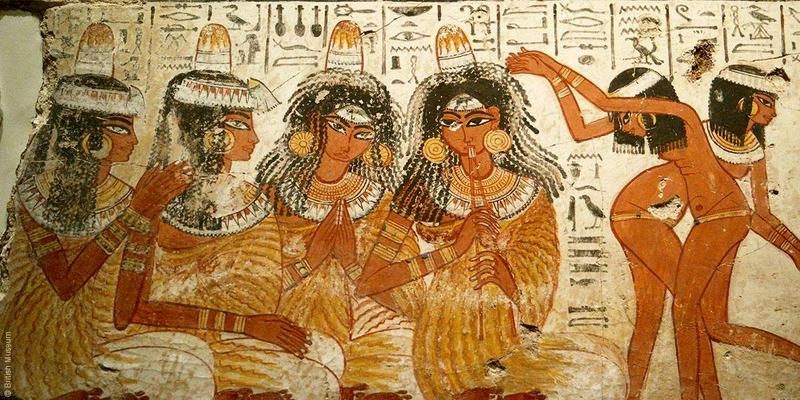Ancient Egyptians Had Pregnancy Tests Over 3500 Years Ago (And They Worked)
By | March 8, 2021
Pregnancy tests are never a fun thing to need, they're rarely used in anything but a panic, and this has been a problem that dates all the way back to Ancient Egypt. We have always had this problem. Not only did Ancient Egyptian women have and use pregnancy tests, but they were actually incredibly accurate for the time (70%, which is really not bad at all), and also included more than what we have today: whether the child would be born assigned male or female at birth. Although the Ancient Egyptians used the same method we do today, which is the woman providing a urine sample. We figured out urine samples as being directly tied to fertility over 3500 years ago, and we are still using it today.
So how were pregnancy tests so effective in Ancient Egypt and how could they determine (to a degree) the assigned sex at birth too? Well, part of it is that they weren't exactly peeing on sticks and getting results for "yes or no." The ritual was to pee in a bag of barley and to pee in a bag of emmer wheat. If either bag sprouted any seedlings, the woman was carrying a baby for sure, according to their science, which again, was 70% accurate, according to The National Institute of Health. Now, they weren't exactly going with hormone-based results. A sprout from either bag meant that the person was pregnant, but if you watched closely, which one sprouted first would tell you if you were to have a male or female baby at birth. If the barley sprouted first, the child would be assigned male at birth, and if the emmer wheat sprouted before the barley, it meant you were having a little girl.

The test was generally seen as not-too-accurate by historians because of replication-based tests in modern times. Barley and emmer wheat aren't exactly ways to tell if a child will be born male or female. But that's with modern female biology. Our biology has evolved, changed, mutated, and acquiesced as it has needed to throughout time. Case in point: the barley vs. emmer wheat test. In Ancient Egypt, and in ancient women in general, there was a much higher estrogen concentration in people, so this test was possibly much more accurate when it was being put into regular use. And even then, this was just the best they had by that particular time, if the civilization had lasted at its original fervor, there's no telling what may or may not have been discovered by their science at the time. They did invent astrology, after all.

One article used Sofie Schiødt, Ph.D.'s research in saying that that "Many of the ideas in the medical texts from ancient Egypt appear again in later Greek and Roman texts... From here, they spread further to the medieval medical texts in the Middle East, and you can find traces all the way up to premodern medicine."
Although pregnant women produce a wide range of hormones throughout their pregnancies that would cause early flowering in particular plants, there is no currently-known replicable relationship to these two.
Spiked estrogen levels in ancient Egyptian women is one hypothesis as to why this test was so tried-and-true in the papyrus that was read in order to uncover these mysteries.
What may come of no surprise, though, is that infant mortality rates in Egypt, as they were throughout the world, were incredibly high. They breastfed their kids and did their best to keep the baby nourished through its infancy, especially under such poor sanitary conditions, during which infant immunity is reduced during weaning, according to the University of Chicago.
One researcher included how the widespread belief that urine was tied directly to fertility wound up in the middle ages: "piss prophets" (which is their real title) would diagnose a pregnancy based on urine, sometimes mixing it with wine to see if there was a reaction. They would also soak a ribbon in a woman's urine, burn it, make her smell it, and if she gagged, she was most definitely pregnant. Things got weird in the Middle Ages.

Anyway, Young Egyptian children under five years old basically had to run through a gauntlet of survival until their fifth birthday, or around then, after which they were expected to live a full life of up to 33 years old, and 29 if you were a woman. "Indirect evidence" comes from the University of Chicago in light of the fact that many ancient Egyptian cemeteries had a childhood death rate peak at "about age 4," which is right around when ancient Egyptians started weaning (weakening their immune systems to get ready to eat solid food).
This ancient Egyptian pregnancy test carried over to Greece, and even modern and, in part, medieval medicine, so it goes without saying that they did a lot of their thinking right, and the fact that there are so few ancient Egyptian texts that mention this just shows how much we have to yet to learn about Ancient Egypt in general.
Also, it's not like we're in the clear here as far as old wives' tales go. Ours include such treasured hits as the ones where a woman who eats a lot of sweets, garlic, or has acne will have a girl, and beliefs that if she has a healthy glow and dilated pupils, that it will be a boy.

